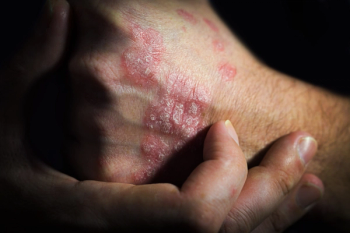
ICS Use Tied to Fewer Exacerbations in Patients With Bronchiectasis and Elevated Blood Eosinophils
Key Takeaways
- ICS are commonly used in bronchiectasis patients, despite guidelines advising against it unless specific conditions are present.
- The study found ICS users with elevated eosinophils had fewer exacerbations and hospitalizations compared to nonusers.
Inhaled corticosteroid (ICS) use was common among patients with bronchiectasis and was associated with reduced exacerbations and hospitalizations in those with elevated blood eosinophil counts.
Inhaled corticosteroid (ICS) use is common in patients with
The researchers noted that ICS, which are anti-inflammatory and immunosuppressive drugs that inhibit the expression of various pro-inflammatory genes, have shown benefits in patients with eosinophilic airway diseases, such as
Although bronchiectasis, a chronic lung disease characterized by abnormal widening of the airways and excessive sputum production, is partly driven by excessive airway inflammation, prior research has not consistently demonstrated benefits of ICS in this population. In contrast, some studies have suggested ICS use may be associated with worse outcomes in patients with bronchiectasis.
As a result, current guidelines
Given this discrepancy, the researchers emphasized the importance of determining the prevalence of ICS use and associated outcomes in this population, as it may aid in ensuring greater guideline adherence and reducing care variations.
To investigate this, they analyzed data from the European Bronchiectasis Registry (EMBARC), which collects information on treatment patterns and clinical characteristics of patients across more than 30 countries who were enrolled between 2015 and 2022. Participants were categorized as ICS users or nonusers at baseline to assess the clinical characteristics associated with ICS use.
Patients were followed up for up to 5 years to evaluate long-term outcomes, including exacerbation frequency, hospitalizations, and mortality. The researchers also investigated whether elevated blood eosinophil counts (typically >400 cells/µL, but >500 cells/µL in some cases) influenced the association between ICS use and exacerbation risk.
The study population consisted of 19,324 patients, who were enrolled from 31 countries. Of these patients, 10,109 (52.3%) were prescribed ICS at baseline. After excluding those with a history of asthma, COPD, and/or ABPA, 3174 of the remaining 9715 patients (32.7%) were prescribed ICS against the current guidelines.
Compared with those not using ICS, the researchers observed that ICS users have a more severe bronchiectasis phenotype, as demonstrated by increased radiological severity, a higher daily sputum volume with an increased need for regular airway clearance, and an increased use of other therapies. Other evidence included higher Bronchiectasis Severity Index scores and significantly worse lung function (P < .0001 for both), as well as more frequent exacerbations at baseline.
For the outcome analysis, patients were divided into 3 groups: a reference group with bronchiectasis but no evidence of eosinophilic inflammation and no ICS use, a group with elevated blood eosinophils but no ICS use, and a group with both elevated eosinophils and ICS use.
ICS users with elevated blood eosinophils had significantly fewer exacerbations (relative risk [RR], 0.70; 95% CI, 0.59–0.84; P < .001) and hospitalizations (RR, 0.56; 95% CI, 0.35–0.90; P = .016) than the reference group. In comparison, nonusers with elevated blood eosinophils showed a modest, nonsignificant increase in exacerbations (RR, 1.17; P = .053). Lastly, no significant differences in mortality were observed between groups.
The researchers acknowledged their study’s limitations, one being that they may have included those with undiagnosed asthma and/or COPD. They noted that the subjective nature of physician diagnoses creates these challenges that may have impacted their results. Despite their limitations, the researchers expressed confidence in their findings, using them to suggest areas for further research.
“Our data suggest the urgent need for new RCTs [randomized controlled trials] of ICS in patients with eosinophilic bronchiectasis,” the authors concluded.
References
- Pollock J, Polverino E, Dhar R, et al. Use of inhaled corticosteroids in bronchiectasis: data from the European Bronchiectasis Registry (EMBARC). Thorax. 2025;80(6):358-368. doi:10.1136/thorax-2024-221825
- Polverino E, Goeminne PC, McDonnell MJ, et al. European Respiratory Society guidelines for the management of adult bronchiectasis. Eur Respir J. 2017;50(3):1700629. doi:10.1183/13993003.00629-2017
Newsletter
Stay ahead of policy, cost, and value—subscribe to AJMC for expert insights at the intersection of clinical care and health economics.












































